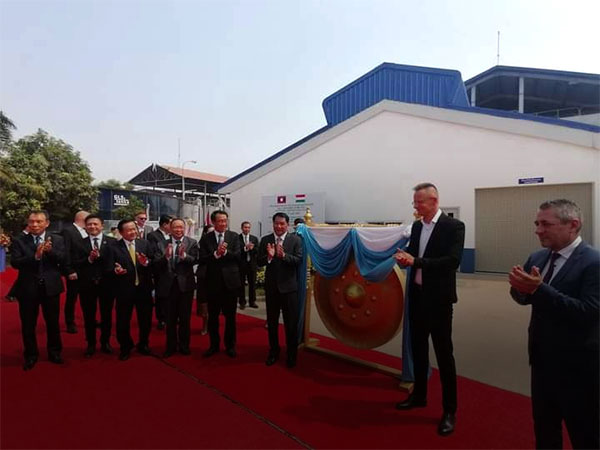City residents to benefit from Dongbang water treatment plant
Residents of Vientiane can be assured of a better water supply following support from the Hungarian government for the Dongbang Water Treatment Plant Phase II Expansion Project, which has the capacity to produce an extra 24,000 cubic metres of water per day.
 |
| Mr Atsaphangthong Siphandone (centre left) and Mr Peter Szijjarto (right) attend the Dongbang water treatment plant handover ceremony in Vientiane. |
An official handover ceremony of the Dongbang Water Treatment Plant Phase II Expansion Project and launch of the Wastewater Treatment Plant, funded by a Hungarian government tied Aid Loan programme, took place in Nasala village, Xaythany district.
The event was led by the Mayor of Vientiane, Mr Atsaphangthong Siphandone, and Hungary’s Minister of Foreign Affairs and Trade, Mr Peter Szijjarto.
Speaking at the event, the Director of Vientiane’s Public Works and Transport Department, Mr Soulivanh Phommahaxay, said the project agreement was signed between Laos and Hungary in December 2017.
The project was scheduled to finish within four years at a cost of US$100 million.
The Dongbang water treatment plant has been built on the banks of the Nam Ngum River, in an area that is safe from erosion.
The plant uses the rapid sand filter system (system fast guard) with a two-storey structure that has a water filter system at the top and a reservoir of clean water.
Construction began in 2020 but the arrival of Covid-19 that year caused numerous difficulties.
However, construction was 13.06 complete in 2020. Work progressed faster in subsequent years, achieving 70.66 percent completion in 2021, 97.69 percent in 2022, and full completion in March this year.
The whole Dongbang water plant facility, including the extension, will be able to supply 44,000 cubic metres of water per day, raising total water supply in Vientiane to 348,000 cubic metres daily.
The wastewater treatment plant project got underway in the middle of 2018 and has a production capacity of 26,000 cubic metres per day.
By Times Reporters
(Latest Update April 28, 2023)
|